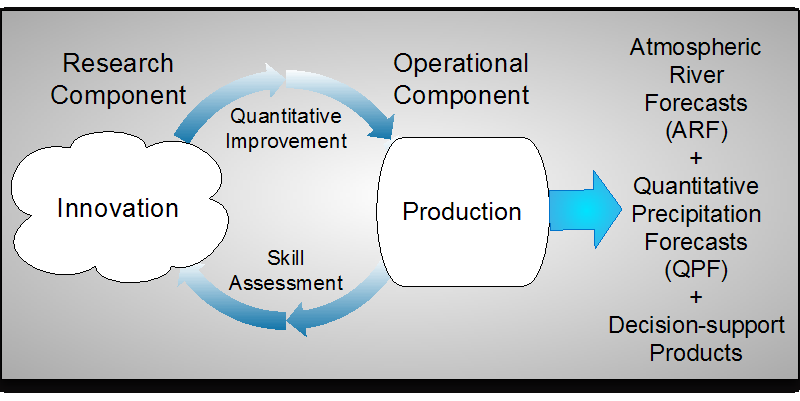West-WRF
CW3E has developed the West-WRF model partly to improve the accuracy of extreme precipitation events and partly as a testbed for understanding the physical processes that drive extremes in weather. The two goals work together to translate new physical process modeling and numerical techniques to objective improvements in weather forecast accuracy during extreme events. These two goals are supported by five primary areas of modeling system development, including:
- data assimilation and ensemble methods to quantify and reduce forecast error
- physical process studies to translate science into improved model accuracy with an emphasis on physical reality
- Modern, open-source, code management
- Verification of predictions in operational and historical simulations
- Maintenance of a real-time forecast workflow, with up-to-date dependent data streams and innovation in products
West-WRF is operated in two primary modes, production and innovation (see Figure 1). In production mode, West-WRF is run as a deterministic model to produce near real-time forecast products, available here, primarily during California’s wet season (December – March). Research mode includes simulations for the purposes of physical process studies, development of advanced prediction techniques (data assimilation, ensemble forecasting), and verification for measuring model accuracy. Both modes are run at San Diego Supercomputing Center’s High Perfomance Computing facilities, and are supported by research staff, postdoctoral scholars, and graduate students at CW3E.

Contact: Andrew Martin (mc@ucsd.edu)
